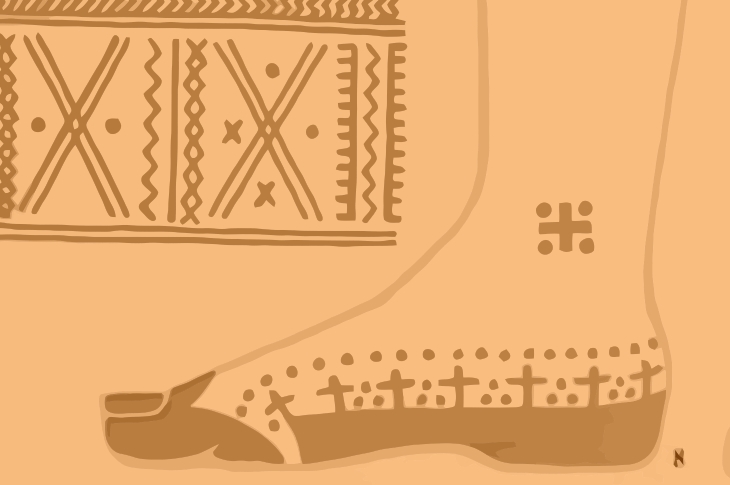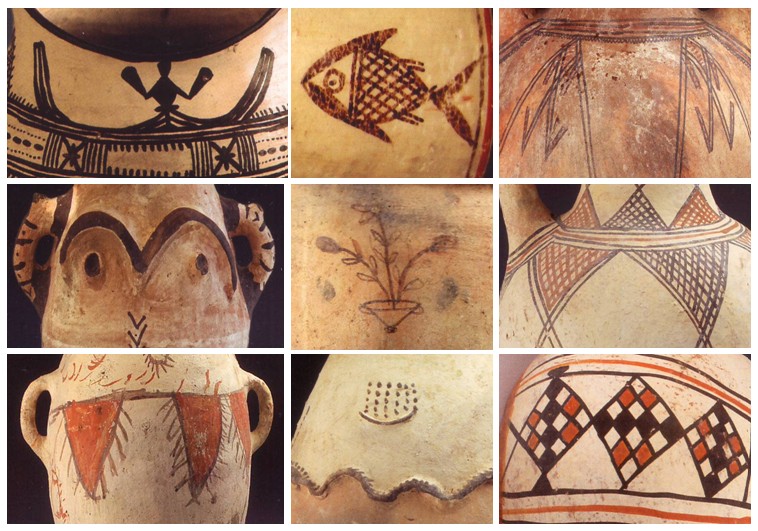The Berbers are the oldest people in North Africa. They are also known as Amazigh. Their tribes span from Mauritania and Egypt, where they live in the mountains and parts of the vast Sahara desert. The Berbers are known as Amazigh. This means “the noble and free man” and would mean that they are free or noble. “Berber” comes from Greco-Roman culture. It is a negative term that refers to anyone who does not speak Gree
Pre-Islamic times were the era when Berber tattoos first used symbols, motifs and designs. This symbolism was later influenced in part by Islamic culture’s geometric patterns. They were used to decorate Berber Rug as well as all types of jewelry and handicrafts made by Amazigh tribes.
The Berber (Amazigh), villages in the Maghreb in Morocco, Algeria, and Tunisia have always had a close relationship with nature. They put it above their own needs. The close relationship with nature creates a feeling of fear mixed with respect. Nature is the source for all artistic and material creative inspiration.

Lion’s paw: the lion’s claws symbolize strength. It is a symbol of protection.

Ouarida: the shape of the diamonds symbolizes a kind of flower. It is a symbol of protection against the evil eye.

Eye: the cross in the middle serves to deflect evil in four directions. It is a symbol of protection against the evil eye.

Saw: is a symbol of metalworkers, an occupation that is understood with deep respect. Metal keeps evil spirits away.

Seeds: fertility symbol.

Bird: positive motive that attracts “baraka”, divine protection.

Amulet.

Scissors: is a symbol of metalworkers, an occupation that is understood with deep respect. Metal keeps evil spirits away.

Sickle: is a symbol of metalworkers, an occupation that is understood with deep respect. Metal keeps evil spirits away.

Finger: protection symbol.

Snake and fish skeletons: both represent a holy person and also have many magical and medicinal properties.

Frog: it is associated with fertility and also with magical rites.
Berber motifs have a long history. It isn’t known if the first designs were applied to the body as tattoos or on other material objects (carpets and fabrics, leather, wood, etc.). The fact that similar patterns have been around for a long time in both formats is a certainty.
The tribes will have their own models. It is easy to identify the region from which the models are derived. While some patterns are specific symbols with a particular utility, others have an aesthetic purpose. The Berber culture includes tattoos on the arms, hands, and feet.

Tattoos is one of the oldest traditions in Berber Culture. Its origins date back to the preIslamic period. Tattoos were used by women to show beauty and attraction or to express feelings or social status. Berber tattoos go beyond being a cultural expression of a Berber community. This tradition is an integral part of Berber history. These tattoos can still be found in Tunisia and other North African countries.
Berber tattoos have many meanings, depending on which symbols are used. Each symbol has its own meaning. The most common and easily recognized female symbols relate to love, fertility, and birth. The “X” symbol is used to indicate a woman’s readiness to conceive. The rhombus is the symbol for the mother’s womb. Other symbols can be used to express love or eroticism or seduction.
Berber women tattooed their foreheads, cheeks, cheeks, and back. The request for other parts of the body was rarely made. Even though this tradition is slowly disappearing, the old Berber women cherish their tattoos and all that lies behind them.
Today, however, permanent tattooing is not something that women in Berber areas practice anymore.
The same patterns are reproduced by the Berber women using henna, particularly on their hands and feet. Some motives can be used to combat the evil eye, cure specific diseases, promote fertility, or protect women against their husbands’ betrayals. Others have an aesthetic purpose.

Tatouage berbère du Maroc. Le motif en forme de croix sur la cheville est destiné à favoriser la fertilité.
Berber ceramics can be practiced by either men or women, depending on where they are found. The patterns in regions where women practice it are more diverse and more reminiscent of henna tattoos. The pottery has the appearance and all that it contains of a woman’s physique. Each part of the pottery bears the name of the different parts of the human body, such as the stomach, neck, stomach, and mouth.

Berber carpets have simple patterns, with straight lines and geometric shapes. Triangles, rectangles and rhombuses are the most common shapes. Every carpet is unique and is the result of the creativity of the Berber craftswoman. The main pattern, colors, and patterns that will be used when weaving the rug must all be memorized. Even though the Berber woman can memorize a lot of patterns, she weaves her rug to reflect the tribe’s specific needs.
Every Berber region is unique. These differences can be seen in the colors, shapes, and sizes of the patterns, weaving techniques, material used, and the shape of the knots. These variations are often caused by the environment. Carpets made in the Tazart region of Morocco, for example, are mainly yellow, red, and orange due to the abundance of henna, saffron, and henna. While Berber patterns may look similar in different areas, each tribe has its own unique way of making the rug.

Berber symbols and motifs are still a part of North African culture, not just in Berber-majority areas but in all regions that have inherited this millennial tradition. Discover also our new collection inspired from AMAZIGH BERBER PATTERNS

















